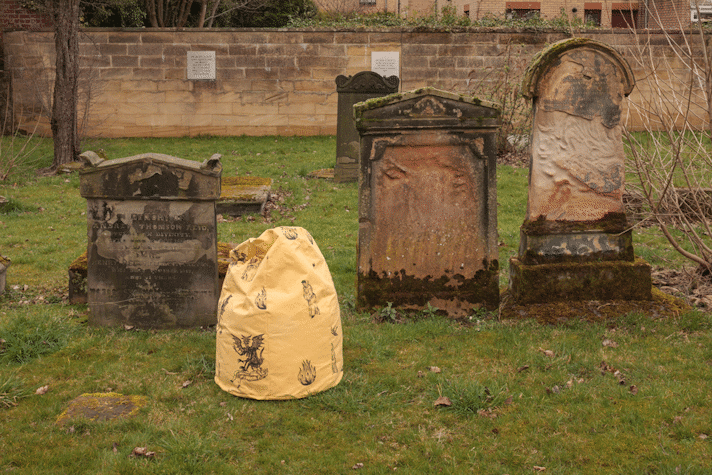Saturday
Saturday
Georgia Horgan uses video, performance, sculpture, appropriation and collaboration to research how histories are represented and politicised. This exhibition dealt with the intersections between the European witch hunts and industrialisation, examining how this history can be articulated from a feminist perspective.
Calton Burial Ground is the memorial cemetery to the Calton Weavers, who were Glasgow textile workers killed during the 1787 strike. The burial ground is located on Abercomby Street, which was formerly known as Witch Loan as the road was believed to bewitched.
Saturday took the form of a performance lecture and screening, exploring the relationship between popular uprisings and the witch scares. In addition, a series of textile pieces were on display at the cemetery. These objects sat in opposition to the austerity of the traditional monuments and gravestones, inviting visitors to consider who or what deserves a memorial and what these memorials should be.
Horgan was the recipient of the Open Glasgow Bursary
Supported by Glasgow International, The Elephant Trust, Clyde Gateway and Glasgow City Council Burial Services

